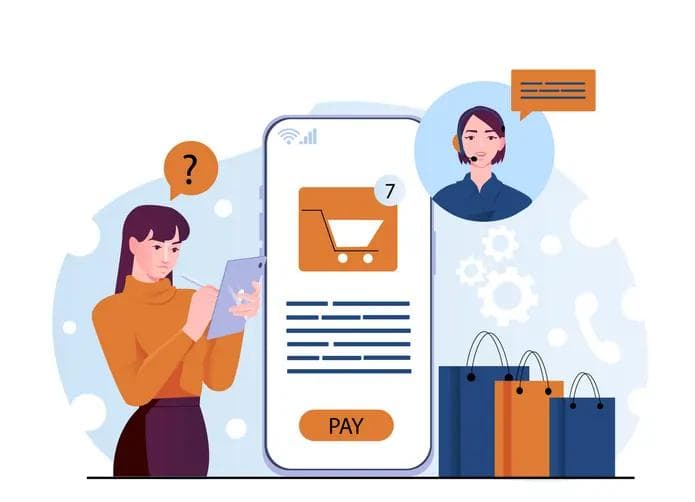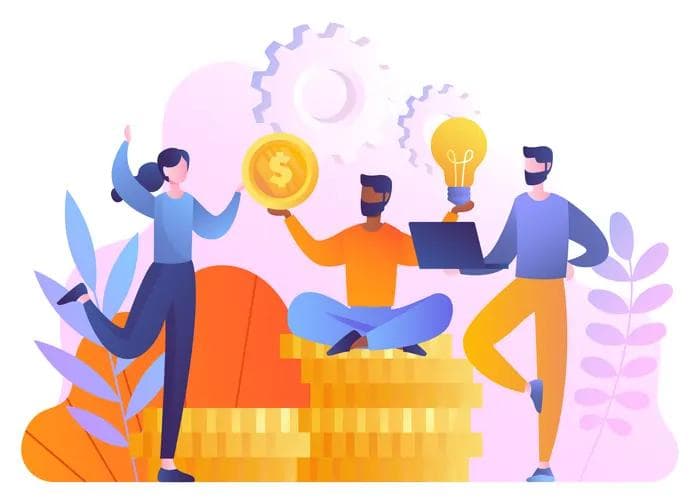The payments sector can help the creator economy to grow
The payments sector can help the creator economy to grow
Published by Jessica Weisman-Pitts
Posted on November 5, 2021

Published by Jessica Weisman-Pitts
Posted on November 5, 2021

By Jens Podewski, co-founder and CEO of FinXP
The creator economy is booming. According to research from Signalfire, there are more than 50 million independent content creators worldwide, with some two million considering themselves to be ‘professionals’.
Even the remaining 48 million or so amateur creators are, in most cases, earning some kind of income from their endeavours. They are small enterprises in their own right, and market conditions are currently favourable. There is an abundance of different platforms creators can use to reach online audiences, while the Covid-19 pandemic has meant more people have more time to consume online content.
However, many of the talented content creators making podcasts, videos and other types of content to share with their online communities are struggling to reap adequate rewards for their work. While they have plenty of tools they can use to help them make content in the first place, they don’t necessarily have all the help they need when it comes to managing their income and cashflows.
Multiple revenue streams
Part of the problem is the number of different ways content creators can monetise their efforts. They could be making money from advertising, subscriptions, merchandise, product placement, sponsored content, digital content sales, fan clubs, tipping, and even in-person attendance at events. In most cases, it will be a combination of several different streams.
Many of the revenue streams go through the platform that the creator is using, with the relevant fees being skimmed off by the platform owner. If you take into account the fact that each creator is probably using more than one platform — in most cases multiple platforms — then you will begin to realise just how complex the finances of the creator economy are. It’s an awful lot to keep on top of when you are a one-person operation.
It’s important to remember that the vast majority of creators aren’t earning massive amounts of money. It comes through in dribs and drabs and while it might ultimately total up to a tidy sum for a private individual, it’s not going to put them on a par with Premier League footballers or Hollywood stars. But when each and every payment needs to be chased, processed and managed it will take up a significant amount of the creator’s time. And they won’t have an agent to do it for them.
Creators rely heavily on platforms, but often the relationship between the two can be strained. YouTube has continually upset its community of creators with changes to its policy and opaque decisions to ‘demonetise’ popular creators in the past. In many other cases, we’ve heard complaints from creators who think that the platforms aren’t giving them a fair cut, or they struggle to access funds that they have rightfully earned.
By the same token, not all creator platforms are raking it in either. The big players — YouTube, TikTok, Instagram, Snapchat, Twitch and the like — dominate the market and play host to the most high-profile creators. Newer platforms such as Clubhouse have generated a great deal of interest, but there still seem to be doubts about how they can effectively monetise their offering.
Keeping creators happy
The key to the ongoing growth of the creator economy revolves around a harmonious relationship between creator and platform. Stronger bonds between platforms and creators will generate additional income and result in higher-quality content. So, the platforms need to ensure that creators are getting a fair cut of the money they generate, and that they can access these funds quickly and easily. Any fees applied need to be transparent and straightforward. There also needs to be an effort to ensure consistency in policy decisions, in order to avoid alienating large numbers of creators.
Platforms need to look to innovative fintech solutions in order to provide their creators with the reliable income streams they need to develop a sustainable business. With some 29% of American children wanting to be a creator when they grow up — compare this with just 11% who want to be astronauts — it’s clearly a booming industry, and the platforms that best serve their community of creators stand the best chance of achieving growth.
By supplementing their understanding of the creator economy with partnerships that allow them to offer banking services, payments and card solutions to their community, platforms can keep creators happy — leaving them more time to focus on doing what they do best. Payments to creators in any currency — even cryptocurrency — can be processed, fees collected, and payouts made quickly and without fuss to the creators, no matter where in the world they are based. Creators can access their funds using the platform’s branded cards in a number of different currencies.
With the right support from fintech providers, platforms can really move the needle when it comes to giving creators what they really want and need in order to succeed. There’s a bright future for the creator economy, just as long as creators can access the right kind of financial services.
By Jens Podewski, co-founder and CEO of FinXP
The creator economy is booming. According to research from Signalfire, there are more than 50 million independent content creators worldwide, with some two million considering themselves to be ‘professionals’.
Even the remaining 48 million or so amateur creators are, in most cases, earning some kind of income from their endeavours. They are small enterprises in their own right, and market conditions are currently favourable. There is an abundance of different platforms creators can use to reach online audiences, while the Covid-19 pandemic has meant more people have more time to consume online content.
However, many of the talented content creators making podcasts, videos and other types of content to share with their online communities are struggling to reap adequate rewards for their work. While they have plenty of tools they can use to help them make content in the first place, they don’t necessarily have all the help they need when it comes to managing their income and cashflows.
Multiple revenue streams
Part of the problem is the number of different ways content creators can monetise their efforts. They could be making money from advertising, subscriptions, merchandise, product placement, sponsored content, digital content sales, fan clubs, tipping, and even in-person attendance at events. In most cases, it will be a combination of several different streams.
Many of the revenue streams go through the platform that the creator is using, with the relevant fees being skimmed off by the platform owner. If you take into account the fact that each creator is probably using more than one platform — in most cases multiple platforms — then you will begin to realise just how complex the finances of the creator economy are. It’s an awful lot to keep on top of when you are a one-person operation.
It’s important to remember that the vast majority of creators aren’t earning massive amounts of money. It comes through in dribs and drabs and while it might ultimately total up to a tidy sum for a private individual, it’s not going to put them on a par with Premier League footballers or Hollywood stars. But when each and every payment needs to be chased, processed and managed it will take up a significant amount of the creator’s time. And they won’t have an agent to do it for them.
Creators rely heavily on platforms, but often the relationship between the two can be strained. YouTube has continually upset its community of creators with changes to its policy and opaque decisions to ‘demonetise’ popular creators in the past. In many other cases, we’ve heard complaints from creators who think that the platforms aren’t giving them a fair cut, or they struggle to access funds that they have rightfully earned.
By the same token, not all creator platforms are raking it in either. The big players — YouTube, TikTok, Instagram, Snapchat, Twitch and the like — dominate the market and play host to the most high-profile creators. Newer platforms such as Clubhouse have generated a great deal of interest, but there still seem to be doubts about how they can effectively monetise their offering.
Keeping creators happy
The key to the ongoing growth of the creator economy revolves around a harmonious relationship between creator and platform. Stronger bonds between platforms and creators will generate additional income and result in higher-quality content. So, the platforms need to ensure that creators are getting a fair cut of the money they generate, and that they can access these funds quickly and easily. Any fees applied need to be transparent and straightforward. There also needs to be an effort to ensure consistency in policy decisions, in order to avoid alienating large numbers of creators.
Platforms need to look to innovative fintech solutions in order to provide their creators with the reliable income streams they need to develop a sustainable business. With some 29% of American children wanting to be a creator when they grow up — compare this with just 11% who want to be astronauts — it’s clearly a booming industry, and the platforms that best serve their community of creators stand the best chance of achieving growth.
By supplementing their understanding of the creator economy with partnerships that allow them to offer banking services, payments and card solutions to their community, platforms can keep creators happy — leaving them more time to focus on doing what they do best. Payments to creators in any currency — even cryptocurrency — can be processed, fees collected, and payouts made quickly and without fuss to the creators, no matter where in the world they are based. Creators can access their funds using the platform’s branded cards in a number of different currencies.
With the right support from fintech providers, platforms can really move the needle when it comes to giving creators what they really want and need in order to succeed. There’s a bright future for the creator economy, just as long as creators can access the right kind of financial services.
Explore more articles in the Business category











